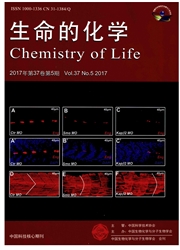
欢迎您!东篱公司
退出

 中文摘要:
中文摘要:
外泌体(exosome)是细胞主动向胞外分泌的大小均一的囊泡样小体,具有抗肿瘤免疫、促血管新生等生理功能。不同类型的细胞可以释放出外泌体,正常生理状态下血液、尿液、乳汁和支气管灌洗液中也能分离到外泌体。本文主要对外泌体的结构、功能和提取方法、外泌体与靶细胞的作用方式进行综述。
 英文摘要:
英文摘要:
Exosomes are automatically secreted homogenous membrane vesicles, with multiple functions such as anti-tumor immunity and angiogenesis. Exosomes have been found to be released by various cell types and isolated from biological fluids, including plasma, urine, breast milk and bronchial lavage fluid. In this review, we summarize the structure, function and extraction of exosomes, and the different ways exosomes target to cells.
 同期刊论文项目
同期刊论文项目
 同项目期刊论文
同项目期刊论文
 Increased circulatory RAS activity can be inhibited by statins in patients with hypercholesterolemia
Increased circulatory RAS activity can be inhibited by statins in patients with hypercholesterolemia The involvement of the CD40-CD40L pathway in activated platelet-induced changes in HUVEC COX-2 and P
The involvement of the CD40-CD40L pathway in activated platelet-induced changes in HUVEC COX-2 and P New population-based exome data question the pathogenicity of some genetic variants previously assoc
New population-based exome data question the pathogenicity of some genetic variants previously assoc PPAR gamma Ligands Decrease Hydrostatic Pressure-Induced Platelet Aggregation and Proinflammatory Ac
PPAR gamma Ligands Decrease Hydrostatic Pressure-Induced Platelet Aggregation and Proinflammatory Ac Should Aspirin Be Used for the Primary Prevention of Cardiovascular Disease in the General Populatio
Should Aspirin Be Used for the Primary Prevention of Cardiovascular Disease in the General Populatio Invasive Management of Acute Coronary Syndrome in Patients End-stage Renal Disease: a Meta-analysis2
Invasive Management of Acute Coronary Syndrome in Patients End-stage Renal Disease: a Meta-analysis2 期刊信息
期刊信息
